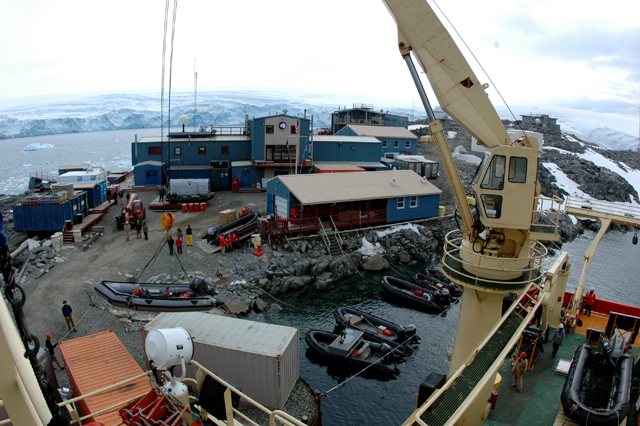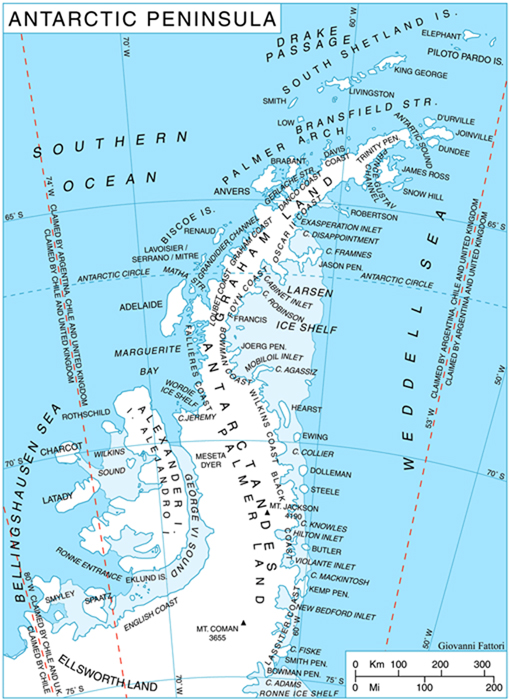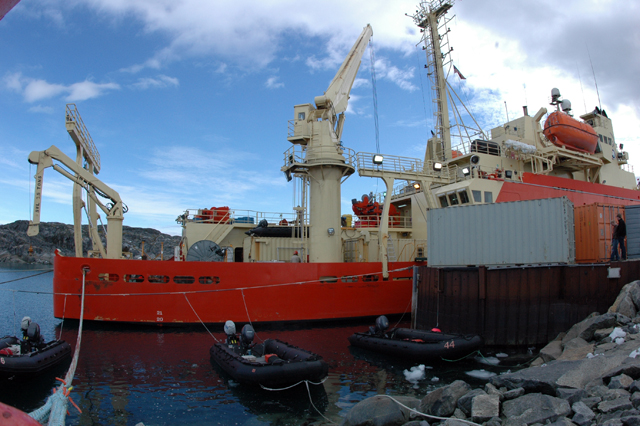All aboardGould makes countless crossings of Drake Passage in support of sciencePosted January 15, 2010
The dreaded Drake Passage was more like "Drake Lake" during an ocean transit that crossed from the old decade into a new one. The ARSV Laurence M. Gould That unimpeded flow — combined with strong winds and various currents — helps produce some of the nastiest weather conditions on the planet if you find yourself rounding South America’s Cape Horn by sea in either direction. Sea swells of 20 feet are not uncommon. Forty-foot seas are not unheard of. But crossing the Drake from Punta Arenas, Chile, is often a necessary evil for scientists who study the ecosystem along the Antarctic Peninsula. In this case, the ship carried a full complement of scientists who work on one of the U.S. Antarctic Program’s The early January crossing of the Drake was one of the smoothest Capt. Joe Abshire has experienced over the last five years he’s been aboard the research vessel, which the National Science Foundation (NSF) Abshire, a stick-thin and amiable man who comfortably chats with the scientists aboard his vessel, left a previous captain position to serve on the Gould. It took him three years to rise from third mate to his current position. “It’s a nice job and it’s a unique job, and it’s one of the very few icebreakers in the world that’s privately owned,” he said of why he jumped ship in the Gulf of Mexico captaining oil supply vessels to work on the Gould. Many of the crew consider the Gould one of the plumiest assignments for Edison Chouest Offshore, Inc. “It’s a milestone for me,” Hoff said while staring down a few icebergs on the horizon. “It’s a chance of a lifetime.” The workhorse of the USAP, the Gould operates year-round. Its missions could be as simple as moving cargo and people between South America and the program’s research base at Palmer Station Or they could be extreme science cruises that last upwards of 60 days or more. On a recent assignment, the Gould and its 17-member crew shuttled nonstop from Palmer Station throughout the region, supporting two very different projects. One involved Doug Nowacek, a scientist from Duke University who uses noninvasive methods to track whales in the ocean. The Gould served as one of the chase “vehicles” as the scientists deployed and recovered electronic tags from smaller Zodiac boats to study how much of the region’s shrimplike krill the humpbacks can devour in a single gulp. [See previous article: Tagged.] It’s an important equation in the ecology of the region, as the krill are one of the keystone species in the food web, and scientists believe the humpback populations are bouncing back after whaling decimated their populations a century ago. That means there’s possibly another major predator competing the region’s limited — and possibly diminishing — food resources. And whenever the whale scientists retired to Palmer Station, another group of researchers conducted fishing expeditions to capture Antarctic icefish for study — critters with unique characteristics that allow them to survive in the freezing waters here. [See previous article: Feeling the heat.] “That was an exceptionally, insanely productive cruise for Doug, but for us it was extremely difficult,” Abshire said. “There was no down time for the vessel,” he added. “There were two separate support operations going on, with two separate agendas in two totally different areas. … [We] got it done and proved we could support two different cruises at once.”1 2 Next |



For USAP Participants |
For The Public |
For Researchers and EducatorsContact UsNational Science FoundationOffice of Polar Programs Geosciences Directorate 2415 Eisenhower Avenue, Suite W7100 Alexandria, VA 22314 Sign up for the NSF Office of Polar Programs newsletter and events. Feedback Form |






